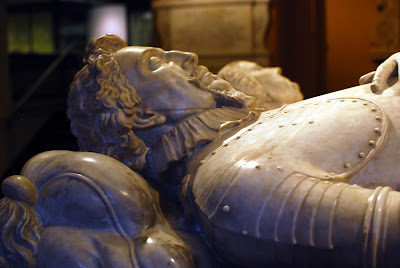Standing amid the towering slabs of rock it's impossible not to wonder, as millions have before you; why here, in the middle of idyllic rolling fields and deeply wooded forest? How were these gigantic stones cut and moved, tens of thousands of years before hydraulic machines and towering cranes were even an idea? Who were the people that created and built this magnificent site? What was the purpose of such a large monument? For the last leg of our trip, we were on a journey to find out!
With a few days in the UK before our flight home, we decided to leave London for the quiet countryside of Wiltshire county. But the beauty of the surrounding rolling hills and idyllic towns were only a part of the attraction - the real appeal was the allure of Stonehenge. Famous for it's enormous rocks, and how little historians have been able to unearth about it's purpose, Stonehenge is a enchantingly beautiful sight still brimming with mystery and intrigue.
As life in the English countryside is much slower than that of London, we found bus service between towns, and to Stonehenge, a bit hit or miss. Unfortunately the public bus route serving the site was cancelled last year leaving only two options to reach Stonehenge without a rental car. Option 1 - catch a public bus to nearby Amesbury and walk two miles to the site, or Option 2 - board the Stonehenge tourist bus in Salisbury (where we were staying) for a direct trip to the site and optional return stop at Old Sarum.
Although we normally try to avoid tour groups by any means necessary, after a warning from our B&B owner that tourists have been killed walking along the winding road from Amesbury to Stonehenge, we decided to cough up the twenty pound/person fee for the tourist bus (this fee does include admission to Stonehenge and Old Sarum as well as front of the line access).
 |
| The iconic stones of Stonehenge in all their glory. |
Although we normally try to avoid tour groups by any means necessary, after a warning from our B&B owner that tourists have been killed walking along the winding road from Amesbury to Stonehenge, we decided to cough up the twenty pound/person fee for the tourist bus (this fee does include admission to Stonehenge and Old Sarum as well as front of the line access).
As it turns out, the bus was actually quite enjoyable, although a bit pricier than we would have preferred, and the audio track that played through the speakers was more informative than annoying.
 |
| The sight as you enter the grounds. |
The site's visitor centre isn't what you'd picture for a site as important and well visited as Stonehenge, especially after visits to comparable ancient sites like the Acropolis, Alhambra, or Colosseum. With only a small ticket window, gift shop, and portable lavatories on the side of a two lane country road, the site is functional and understated, fitting in perfectly with the quaint countryside. However rustic it may be, what the facilities lack in size and grandeur the stones more than make up for.
 |
| The size of the stones is amazing once you get up close - over 24 feet tall in some cases. |
As you pass under the road and finally enter the site, you are immediately entranced by the stones. A haunting and ethereal echo of days long since forgotten, the massive stones rise in majesty and stimulate even the most meager of imaginations. Theories abound regarding their construction and purpose - some sane and some gleefully insane. Whatever you believe to be true, no one can deny the massive effort it must have taken to transport and erect the stones.
 |
| The "Heelstone" sits just outside the circle |
While you can walk in and amongst the stones if you make special arrangement, the vast majority of visitors just take the short circular pathway around the stones - a thoroughly satisfying experience in its own right. The audioguide given to you for free upon entrance enhances the experience with fascinating facts about the mysterious and storied history of the site.
 |
| A marker showing the location of one of the original wooden posts from the original henge |
There's just something about Stonehenge that lures people to it...not unlike the Pyramids or the Colosseum. It's got the right combination of mystery, intrigue, and extravagant speculation that just make it a must see. The site itself is not what you'd expect (although I think that's a good thing), but the aura of seeing something that people still don't fully understand is definitely an uncommon experience and one that you won''t forget.
 |
| One of the many burial mounds scattered around the region |
While the site of Stonehenge is undoubtedly the main reason that people venture to England's West Country, it should be noted that it is not the only neolithic site in the region. In fact, this particular region of the country is one of the most dense when it comes to neolithic sites. If Stonehenge managed to intrigue you, and you want to see something else, check out the henge at Avebury, Woodhenge, the Durrington Walls, or even Old Sarum.















